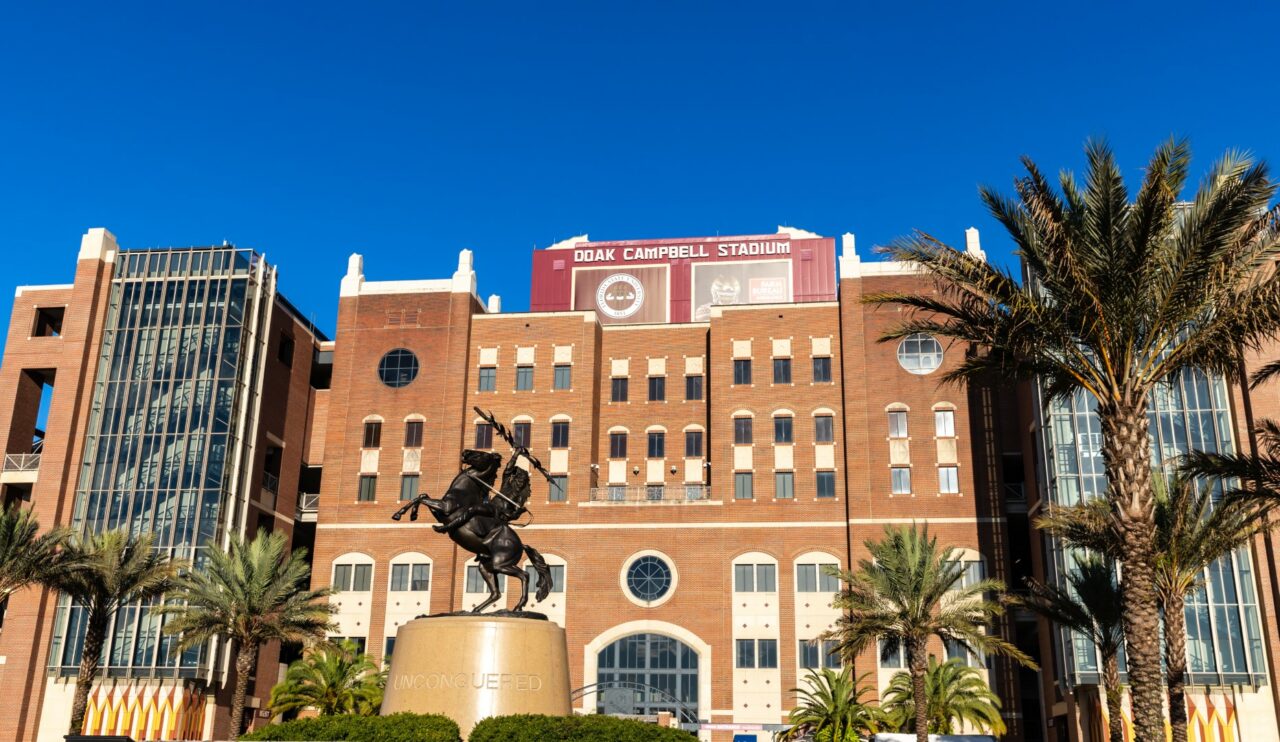
Tallahassee City Commission candidate Adner Marcelin is pressuring Florida State University President Richard McCullough to pull the university’s $20 million Blueprint request for Doak S. Campbell stadium renovations.
Marcelin, the former president of the Tallahassee branch of the NAACP and an FSU alumnus, has made opposition to the Blueprint funding a pillar of his campaign. He told Florida Politics he decided to run after hearing citizen concerns about the project during the Tallahassee NAACP’s “Say No 2 Doak” town hall last month.
In a letter to McCullough, Marcelin said the funding request could drive a wedge between Tallahassee and FSU residents by keeping the money from going to other areas.
“The proposal has become a source of considerable controversy which threatens to unnecessarily strain the relationship between Florida State and the broader community it calls home,” he wrote. “The issue has drawn a great deal of criticism from the public, much of which I believe is well-founded.”
The Blueprint Intergovernmental Agency board voted 8-4 in September to give FSU $20 million of agency funding set aside to promote economic development. FSU requested the funding earlier this year after pulling a $30 million request for the construction of a convention center.
The funding would pay for most infrastructure components within the University’s $120 million plan to revamp the football stadium, according to documents from the September Blueprint meeting.
There are limits to how money for the stadium can be used. It is the final portion of the Office of Economic Vitality budget and about 12% of Blueprint’s funding. That budget must be used for economic development projects and cannot be used for infrastructure projects, like roads, according to state law governing programs like Blueprint.
Marcelin said he would want money for the project to instead support building more homeless shelters, job training centers and small business grant programs
“I bleed garnet and gold, but we should be promoting the growth of businesses in our community,” he said. “I believe going forward with this, looking back it will haunt us.”
The same day Marcelin sent his letter, FSU Director of Athletics David Coburn penned his own to Tallahassee residents defending the project.
“Unfortunately, some members of our community are sharing misleading and blatantly false information about this project. They are attempting to portray the project as wasteful spending for luxury seating. This is simply not true,” he wrote.
In the letter, Coburn pointed out that the $20 million is being invested in an FSU Facilities construction project, not in the $100 million “fan experience” project fundraised by FSU boosters. The $20 million will go to structural repairs as well as safety and disability accessibility improvements, according to an assessment report contracted by Blueprint outlining the project’s costs.
“No taxpayer money will be spent on luxury items,” Coburn wrote.
FSU football games promote local businesses, he said, bringing about $50 million to Tallahassee every year. He also pointed out that other local universities also received Blueprint money for their stadium repairs. Florida A&M University received $10 million from Blueprint for Bragg Stadium repairs, and Tallahassee Community College is set to receive $1 million for its baseball facility.
Marcelin said FSU Booster’s ability to raise $100 million for stadium upgrades demonstrates that funding FAMU and FSU stadium repairs are different issues with different concerns.
“Equity is not the same when you look at the two institutions and the amount of financial support they receive,” he said.
FSU spokesperson Amy Farnum-Patronis said she did not know if McCullough has received Marcelin’s letter because he is traveling. This story will be updated with his comments if he issues a response.
The Blueprint board members will decide whether to begin the process to obtain bond financing for the project during their meeting Thursday.




2 comments
J.P. Perkins
December 7, 2021 at 6:38 pm
So FSU already has $100 million to spend on the stadium, but none of that is for making the “necessary” repairs?
This young man running for office is right on track: this is a $20 mil handout to the haves with nine-figures already at their disposal.
William Osceola
December 10, 2021 at 10:33 am
No, the 100 million is specifically been fundraised for the “fan experience” it was solicited on. To bait and switch a fundraiser of this magnitude, as you are suggesting, is tantamount to fraud. If other local universities can tap the Blueprint program for stadium repairs why should the highest revenue generating stadium in the area not also be privy to those funds?
Comments are closed.